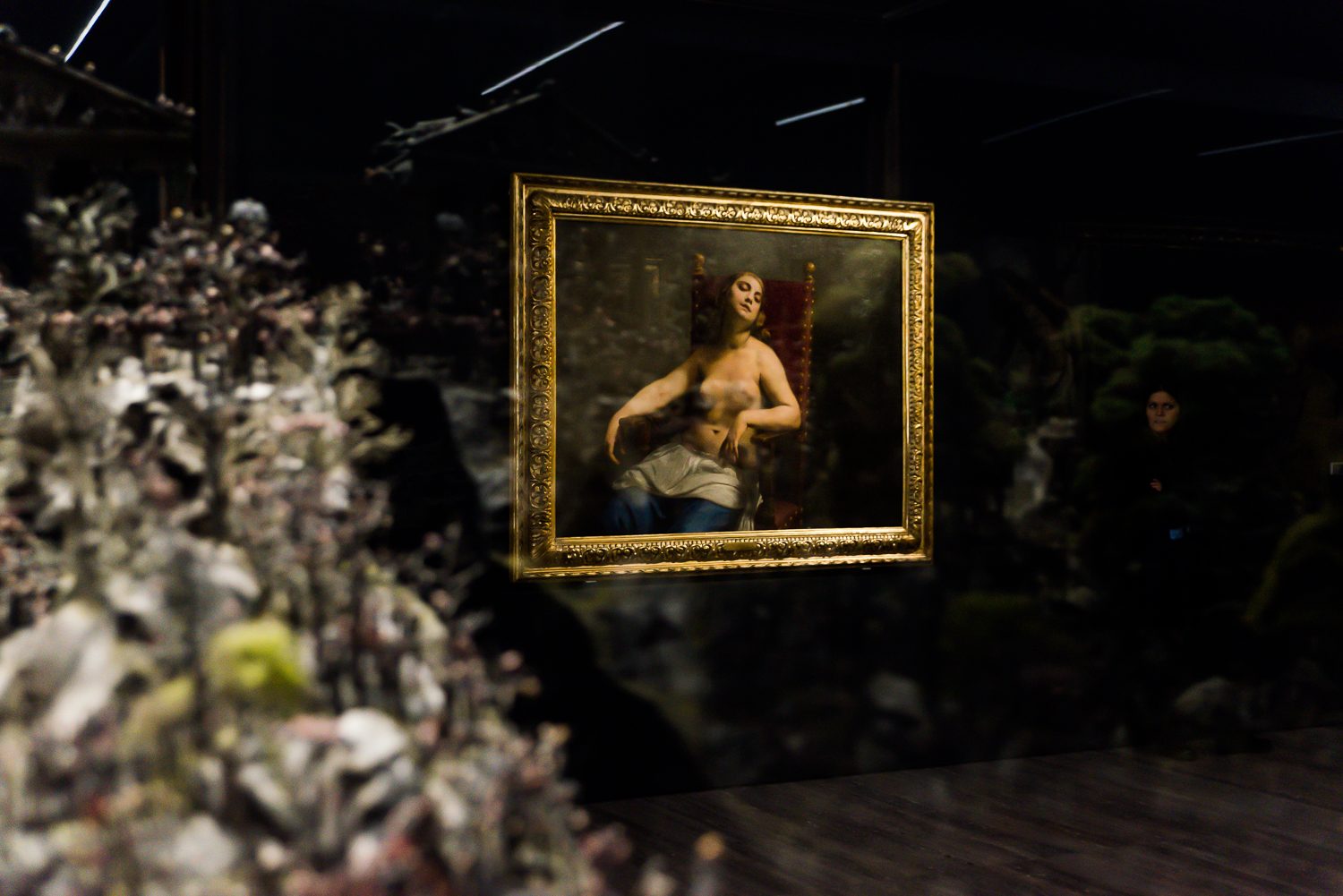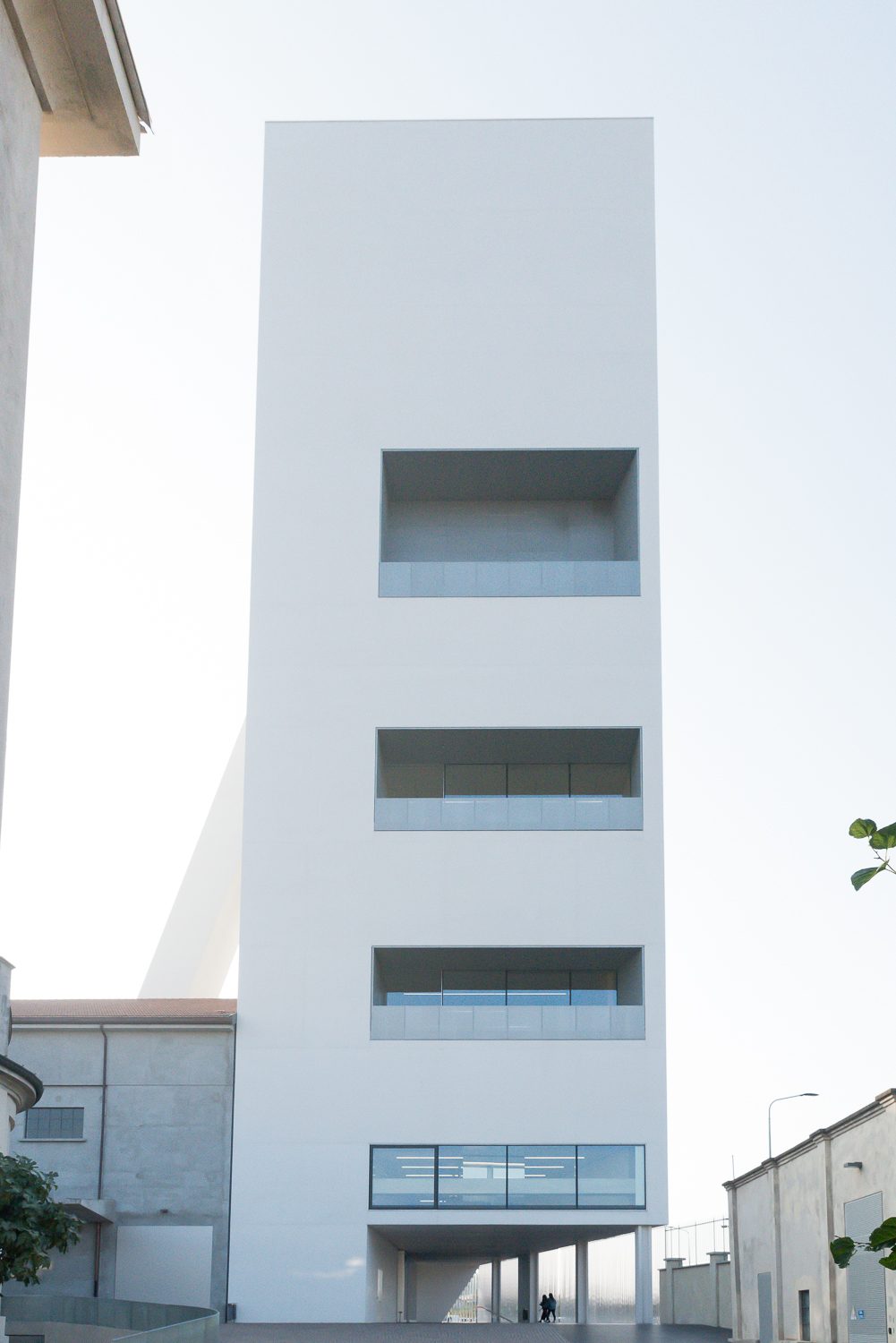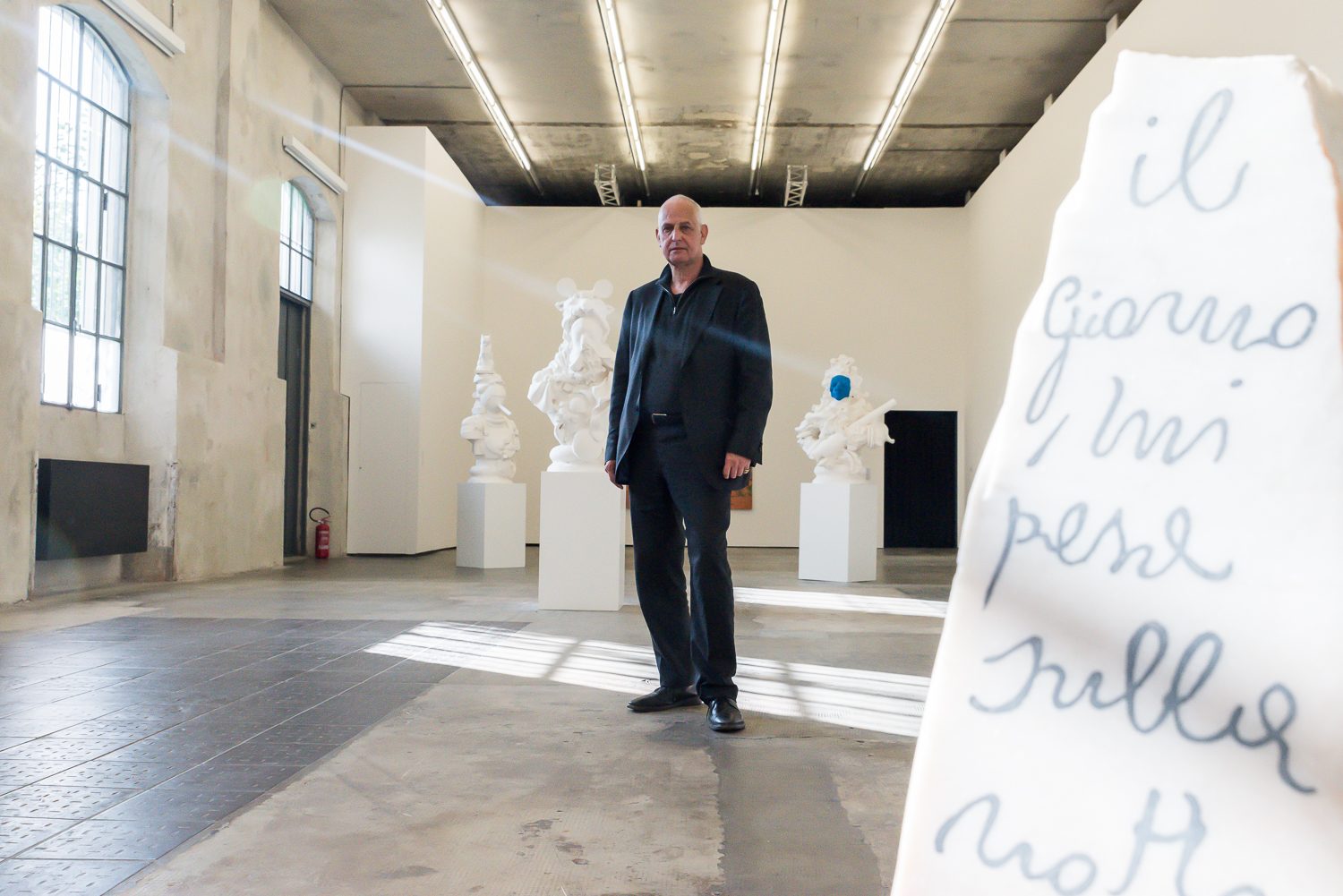Luc Tuymans
Baroque, then and now
Painting is a physical journey that has nothing to do with the language through which we express ourselves
Born in 1958 in Mortsel, Belgium, Luc Tuymans now lives and works in Antwerp. He is one of the most respected contemporary painters of his generation, represented by Zeno X and David Zwirner galleries. His work is in the collections of many institutions such as the Centre Pompidou, the Los Angeles County Museum of Art, the MoMA, the National Gallery in Washington, the Pinakothek in Munich, the Guggenheim in New York, and the Tate Gallery. He is now the curator of the exhibition “Sanguine. Luc Tuymans on Baroque” at the Fondazione Prada in Milan. His new solo show will travel to the Palazzo Grassi Pinault Collection in Venice, starting March 24th.
You are the curator of the exhibition “Sanguine. Luc Tuymans on Baroque” at Fondazione Prada. The show was presented at the Museum of Contemporary Art in Antwerp in the summer of 2018; the second version is on view in Milan until February 25th, with 63 artists. How did this project come about?
This is the twelfth show I have curated. I have been asked to do this type of exercise many times. This specific positioning on the Baroque is linked to my personal taste for the paintings of this period, but also relative to the year 2018, which was the year of Baroque in Antwerp. For the first work, I asked Miuccia Prada—whom I know well, and who owns it—for Edward Kienholz’s iconic “Five Car Stud,” dating from the late 1960s. It evokes the emasculation of a black man, and could almost be a painting by Francisco de Goya. It shows being on the periphery of the action, and our reaction when we witness violence. Should we come out of the shadows and put ourselves in danger, or stay away? I couldn’t show it again in Milan, because the work is fragile, but I didn’t lose out, because I am presenting two paintings by Caravaggio, and more plastic artists here than in Antwerp.
What fascinates you so much about the Baroque period?
The Baroque did not exist in these terms within the history of art until the 19th century. It had to go through Naturalism, Realism, then the French Revolution, before imposing itself and blossoming, but it can be said that it was the first period within art that became globalized. I have created a dialogue between Baroque, Rococo and modern-day artists, visually rather than historically. I think, on the one hand, that we should not underestimate the public’s experience and, on the other hand, it was important to react, on the political level, to this almost globalized populism where everyone is rising up towards globalization. I am quite chauvinistic, but not to that extent—even if, for me, the most important painter in the West is the Flemish Jan van Eyck, even more so than Leonardo da Vinci…


You have already said, in previous interviews, that van Eyck was less appreciated than Leonardo da Vinci because he was too immersed in reality…
Indeed, Jan van Eyck’s work is, conceptually, extremely modern, and Diego Velázquez testifies to this too in his work “Las Meninas.” The Mona Lisa develops the idea of mystery and androgyny, addressing the question of veracity. However, enigma also exists in van Eyck’s faces, in a more daring way, and therefore unforgivable! As if he was showing that he wanted to be humble, while being highly aware of his abilities. Per his contemporaries, he did not totally invent oil painting, unlike what history has ‘remembered’ and what Giorgio Vasari has stated. But this allowed Leonardo to create his first masterpiece, having worked faster than with tempera. Eclecticism was invented by the Baroque and this kind of exhibition, between the Old Masters and Contemporary art, would not exist without this 17th-18th century movement. The eclecticism is post-modern, but also very baroque.
Do you think that an artist should be a “witness” of his time?
A work of art cannot be immediately loaded with political content, but it is always displayed in a certain context that can attest to its political impact. The key example is Francisco de Goya’s “Tres de Mayo,” painted in 1814, after the 1808 shooting in which 43 Spaniards were condemned by French soldiers. This was preceded by engravings; we do not know who had seen them at the time. Edouard Manet provided his own version in 1868 with his painting “The Execution of Maximilian,” which he was never able to exhibit during his lifetime, even after the fall of the Second Empire, because he was opposed to Napoleon III. You can’t go to a gallery and write “art equals politics” on the wall. Art is not political, but life is.
In your own paintings, you often use photographs from magazines or newspapers that are quite significant…
Yes, but I do not conceive that from a moral level, and I always choose images that are strong enough from a pictorial level, like Condoleezza Rice in tears. I am very interested in global geopolitical issues and the history of my country. Belgium’s independence was proclaimed in 1830, but it is not a state, which is very beautiful because it does not impose nationalism, except on the part of the Flemish… It is true that in my painting, I like engagé subjects, and my next exhibition at Palazzo Grassi will be called “La Pelle” (skin), after Curzio Malaparte’s novel published in 1943. This is a euphemism, with regard to what is epidermal, or underneath, so not necessarily very positive… Many works will be shown for the first time, and the idea is not to exhibit images of war or post-colonialism in a direct way, but what resides and remains in the depths. While I sometimes use difficult subjects, they are sparked by the physical or psychological violence of our daily lives that produces many of them.

Is this the message you wanted to provide in this exhibition?
Probably, because I start the exhibition with Willem de Rooij’s white flowers, some of which set off allergies… even if the white attests to an idea of innocence, and refers—especially in Italy—to marble, and therefore to power. The first room is about the idea of death and many mutilations in the exhibition can be associated with a certain fantasy. In this way, I have brought a rather erotic scene from Jan Van Imschoot’s “L’adoration de François pour Judith” along with more minimalist canvases. Jack Whitten’s ornament is confronted with lithographs by On Kawara, which is from my own collection, and never shown before.
You, indeed, collect and have previously relayed your love of abstract painting, by the likes of Ad Reinhardt or Mark Rothko… What do you like about the work of American expressionists?
I like minimalism and, moreover, I knew On Kawara who, until the end of his life, did not want us to exhibit his first paintings, which seemed a little cartoonish and too figurative. That is why it seemed all the more relevant to me to propose works dating back to 1955, showing a clear link with Hokusai’s engravings, mixed with the idea of death or ghosts. My first painting, “Needles,” from 1975, is now conserved in Kanazawa, Japan…
Your first personal exhibition dates from 1985—ten years after the first painting—because you had wished, for a while, to become a director. Did this experience change your relationship to still (versus moving) images?
Cinema has indeed given me some perspective on things. I was too tormented at the time, and everything seemed to me to be entangled in existential questions. The camera allows you to play with distance, or reduce it when you do close-ups, and this has enriched the way I observe and paint. I always take external sources to begin with, because I don’t try to identify with my work. We are two different entities and that is why I am struck by Mark Rothko, Ad Reinhardt or Robert Ryman. They imposed this distance, even if the latter’s painting might seem very tactile. This promiscuity is so obvious, that the painter was so psychologically confused with his work. The idea of being efficient, even economical, in painting has always fascinated me; we also find this quality with Caravaggio. Painting is a physical journey that has nothing to do with the language through which we express ourselves. The painting immediately shows whether it works—or does not.


But we know that painting is an image and not reality. For you, does this also evoke the falsehood of representation?
This is why I am working on what I call “authentic falsification.” I like to create paintings that are not in the present time, even a little regressive, that could have been done thirty years ago. When I started, Contemporary art was more post-conceptual, with many installations. The choice to paint was a form of reaction, even if I had nothing to do with the Italian trans-avant-garde or the Neue Wilde. At that time, I used to say that I made painted images and not paintings. In the exhibition, the youngest artist is a video artist, Diego Marcon, born in 1985, who filmed a building requisitioned by the Italian government during the time of fascism. It imposes a moment of very sudden, very impacting noise, which makes the spectator jump! The Baroque also deals with impact. Another visual artist, David Gheron Tretiakoff, made his name with a film done in the West Bank, but is presented here in drawings of characters who are immolating themselves with the tip of cigarettes in Gaza.
You are not afraid to address the issues of globalization or post-colonialism…
Yes, because these ideas are not only from today, but also from the Baroque period. Among “Sanguine”’s other strong pieces, I would like to mention “Fucking Hell” by Jake and Dinos Chapman. The first version was shown in the exhibition “Apocalypse, Beauty and Horror in Contemporary Art,” at the Royal Academy of Arts in London, where we showed together; it was burned. Their new 2008 version is even bigger and more ecstatic, proclaiming this global idea that there are no longer predators or victims, but that everyone persecutes and blurs others in their own way. In the same room, I exhibit a painting by the young Caravaggio, “Boy Bitten by a Lizard,” which symbolizes anxiety and pain, in a certain erotic manner. This painter, after Lucas Cranach, was one of the first pornographers. But it’s also worth mentioning Kerry James Marshall, whose paintings represent black men in very deep tones, without using the punctuation of pink lips… It’s a bit of a revenge on the Baroque and Rococo, which obviously did not depict black men.
You also show a painting by Michaël Borremans, whom you know and who is another very famous Flemish artist…
I presented him with other, earlier generations of Flemish artists, such as Antoon van Dyck or Adriaen Brouwer, because not everyone understands Contemporary art. If we place Michaël Borremans between two masters, each one will then perceive the importance of his work and better situate it in its continuity. I’m going around a little bit of a populism.

You have a somewhat atypical background… how did you learn to paint?
Not classically, because I was expelled from several academies, but I went to the Free University [Vrije Universiteit] of Brussels and studied art history. As for technique, I taught myself. I like it when painting showcases strong decisions—as those by Marlene Dumas do, for example. Gestuality is very effective. For me, a painting should not be narrative; it should even be the opposite. It is a still image in which movement then intervenes, as we can see very well with Peter Paul Rubens or Caravaggio, who are the first filmmakers.
This exhibition also allows you to distinguish different painting schools, whether Italian, Spanish or Flemish…
We can see, in particular, how the Italians worked with light, weaving it in from a dark background, which required much more material, while Jacob Jordaens or Rubens, with an opposite vision, made it golden, in a less contrasted way. I concluded the exhibition with one of the ten best paintings in the world in the entire history of art: Caravaggio’s self-portrait, “David with the Head of Goliath,” dating from 1609-1610, in a room with a sculpture that Takashi Murakami lent me and a large abstract painting by John Armleder, an underrated artist I love very much. Then there is this painting by Jacob Jordaens, “Les Filles de Cécrops découvrant l’enfant Érichthonios,” which I saw as a child at the Royal Museum of Fine Arts in Antwerp and found fascinating… it seemed so ugly to me.
Should a painting be beautiful?
No, absolutely not.
Interview: Marie Maertens
Photo Credit: Ludovica Arcero












